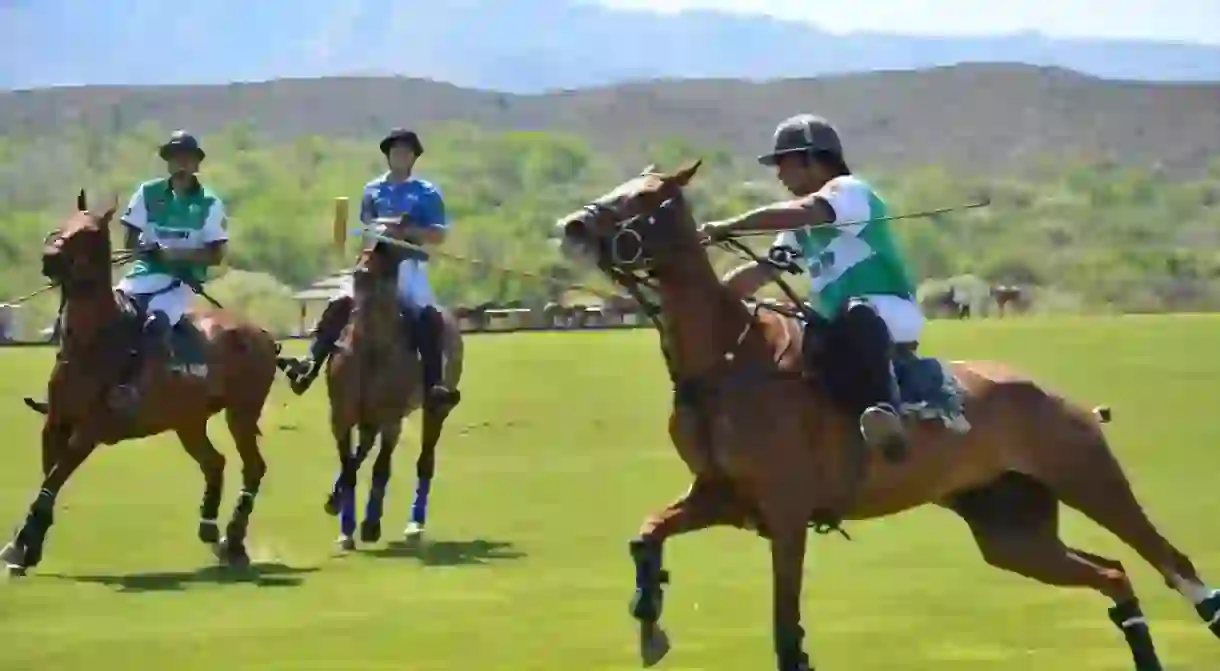What to Know About the Exclusive World of Mexican Polo

When you think of sports in Mexico, soccer or boxing are probably the first that come to mind. But the country also has a vibrant and storied polo scene. Known as the “Sport of Kings,” and particularly popular with the wealthy, polo has a somewhat deserved reputation as an elitist pursuit in Mexico. But the history of the sport in Mexico is a truly fascinating one, and many of its high-flying proponents are keen to attract a broader audience.
The Sport of Kings
The Mexican Polo Federation (FMP) consists of 15 clubs and 350 male and female players. Funding for the sport is largely driven by sponsorship deals, with luxury brands targeting an aristocratic audience. In Mexico, a polo event is an important fixture on the high-society calendar – a place to mingle and be seen.
Yet in recent years, the FMP has actively sought to introduce a new audience to the game by promoting events and welcoming outsiders.

Newcomers are often surprised by what they find at a polo game. Despite its genteel image, the sport is extremely difficult, not to mention dangerous, and is physically demanding for both horse and player.
The game consists of two teams of four, mounted on horses. Players try to hit a ball through two goal posts with a long, wooden mallet. The game is divided into seven-minute “chukkas,” or rounds. A full polo game consists of four to eight chukkas, with a short break between each one.
Aspiring young players usually get their start in the game by working as stable boys (caballerangos) who look after the horses.
In Mexico, the sport has its origins in the British miners and settlers who began arriving in the country in the 1870s. This European game was quickly adopted by the wealthy Mexican elite as a way of demonstrating their breeding and refinement. Polo was also heavily promoted in the 1940s by President Manuel Avila Camacho, himself a keen player.

Carlos Gracida, the Mexican Maestro
Yet Mexico only truly emerged as major polo force in the 1980s, when Carlos Gracida burst onto the scene. A member of the Gracida dynasty, a legendary Mexican polo family, Carlos began playing at age five and competing at age ten. During his storied career, he collected more tournament wins than any other player in history. He also became the only player to win the polo Grand Slam, which consists of the Argentine Open, the British Open and the US Open. Amazingly, he accomplished the feat three times, in 1988, 1989 and 1994.
Reportedly Queen Elizabeth’s favorite player, in his retirement Gracida coached celebrities and royalty, including Prince Charles and Prince William, Prince Talal of Jordan and Rocky star Sylvester Stallone. Tragically, Gracida died in 2014 of injuries he sustained riding in Wellington, Florida.
https://www.instagram.com/p/BQ_OFjqlXQs/?tagged=carlosgracida
The Campo Marte
The most iconic polo field in the country is the Campo Marte in Mexico City. The famous field staged the World Polo Championship in 2008 and the Prince of Wales Cup in 1993, an event which featured both Gracida and Prince Charles.
The regular polo season in Mexico runs from November to April, but there are lesser-known tournaments held in other months. All of these polo events are advertised on the FMP’s official website.
Campo Marte, Avenida Paseo de La Reforma, Miguel Hidalgo, San Miguel Chapultepec, Mexico City, Mexico +52 557 375 8454














